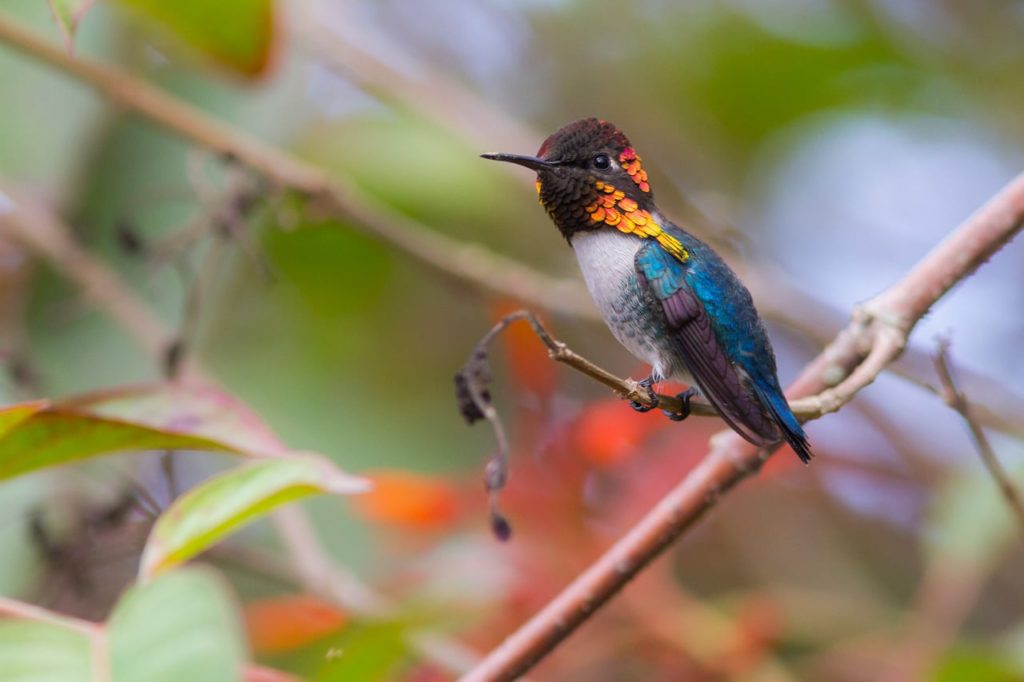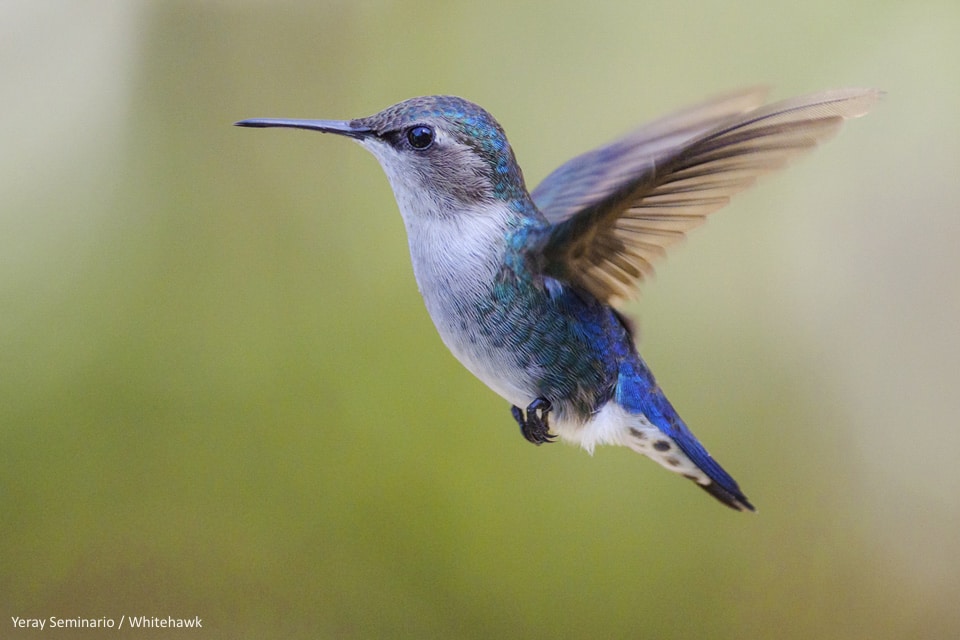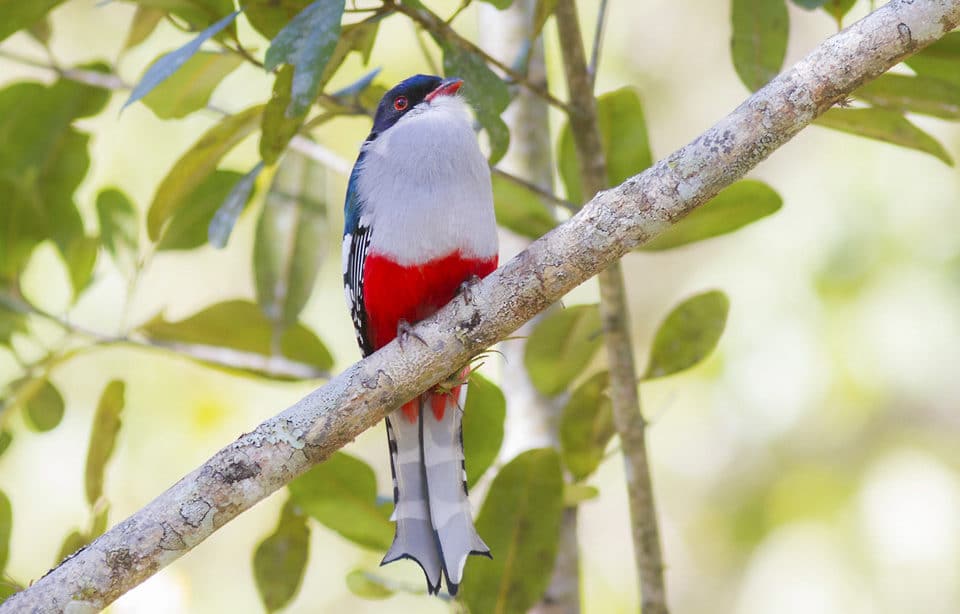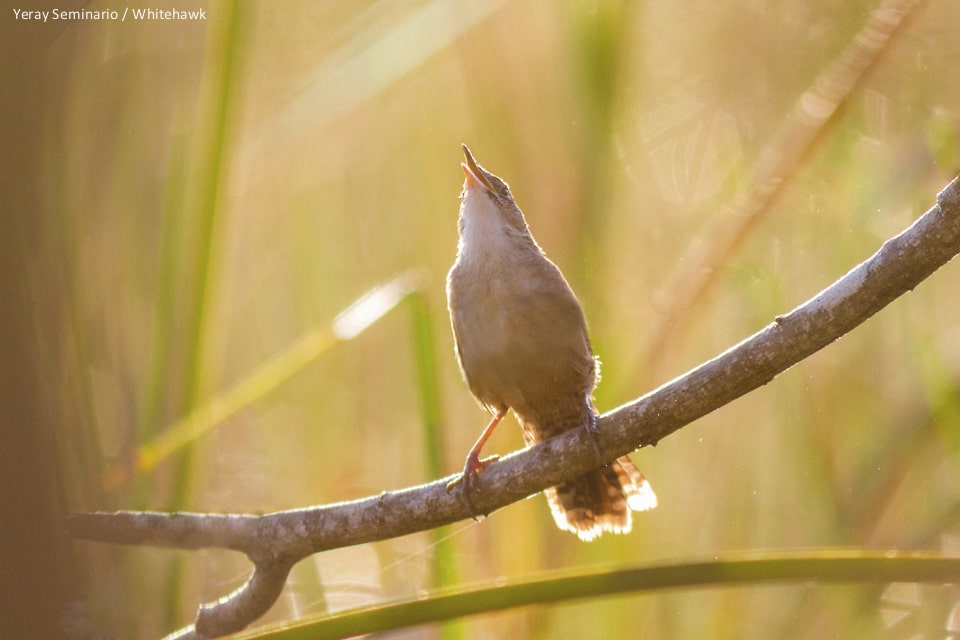
Why Bee Hummingbirds
After our focus on one of the largest and most powerful birds in the world, the Harpy Eagle, we decided to go in the opposite direction for this month. We chose this month’s Bird in Focus to be the Bee Hummingbird, which is the smallest bird in the world! Hummingbirds are found only in the Americas. They range in size from the aptly-named Giant Hummingbird, which measures around 22 centimeters in total body length and can weigh over 20 grams, to the lovely Bee Hummingbird which is only 5-6 cm in length and weighs less than 2 grams! Despite their differences in size, they share many common characteristics.
While the classical image of a hummingbird is one of it sticking its beak into a tubular flower to get at the sweet nectar inside (indeed hummingbirds feed on a lot of nectar) they also eat small insects such as ants, aphids, gnats, and mosquitoes. Hummingbirds have some incredible adaptations that make them fascinating to study and so much fun to watch. They have high metabolic rates and they need to feed almost constantly! At night, when not feeding, they go into torpor, when their metabolic rate slows considerably. They can fly in any direction and have extremely rapid wingbeats. Not to mention, many are adorned with bright and brilliant colors.
These incredible aerial acrobats tend to build small, cup-shaped nests lined with a host of natural materials including lichen, moss, and spider silk. These nests tend to be well-camouflaged and are built on the thin branches of a tree or shrub. Hummingbird nests are somewhat elastic, or stretchy and they can expand as the young nestlings grow.
Some Bee Hummingbird Facts

As you can imagine, there are a lot of fascinating facts about this tiny birds.
- Bee Hummingbirds weigh less than 2 g (0.07 oz).
- These small birds are endemic to Cuba.
- Then International Union for Conservation of Nature categorizes the Bee Hummingbird as Near Threatened. Sadly, its population is in decline.
- Apart from feeding on nectar, these hummingbirds will also feed on small insects.
- Females generally lay 2 eggs. When nestlings hatch, they are featherless. By around 18 days of age, they will be ready to fly from the nest.
When and Where to See Bee Hummingbirds
These hummingbirds live only on one island in the Caribbean – Cuba! (check out these other amazing Caribbean hummingbirds!) And Cuba just happens to be one of our favorite destinations. It is the largest island in the Caribbean and is rich in history, culture, beautiful scenery, welcoming people, and tasty food. January to March is the best time to visit this island nation. However, we can find Bee Hummingbirds year-round in a few areas across the island including Viñales and the Zapata Peninsula.
Apart from this tiny gem, Cuba is home to a plethora of beautiful resident and migratory birds. On a tour of about 10 or 11 days, it is possible to see over 150 species or more, including all of Cuba’s viable endemics and regional endemics. As part of the experience of traveling to Cuba, and to meet the requirements for U.S. travelers, our tours are carried out under the approved Support of the Cuban People travel category.
Under this category, we stay mostly in casas particulares, which are privately owned homes that operate similarly to B&Bs. We eat at local restaurants and spend time with local biologists to learn about conservation work on the island. The tour takes us across a large part of Cuba as we visit a number of different locations and habitats – from historic towns to botanical gardens, agricultural fields, roadsides, and forests- all in search of Cuba’s most iconic bird species.


We will also search for Cuban Trogon, Cuban Tody, Zapata Wren, and Blue-headed Quail Dove while on a tour to search for Bee Hummingbirds.



Would you like to schedule a tour or learn more about how to see Bee Hummingbirds in the wild? Please contact us at info@whitehawkbirding.com
References:
Chai, P. and G. M. Kirwan (2020). Bee Hummingbird (Mellisuga helenae), version 1.0. In Birds of the World (J. del Hoyo, A. Elliott, J. Sargatal, D. A. Christie, and E. de Juana, Editors). Cornell Lab of Ornithology, Ithaca, NY, USA. https://doi.org/10.2173/bow.beehum1.01

